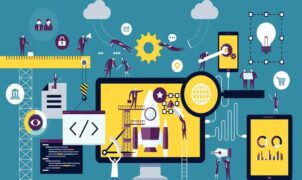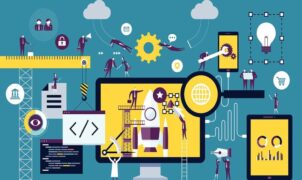I. Deploying CMMS System
Implementing a Computerized Maintenance Management System (CMMS) in a business can bring numerous benefits but also pose certain challenges. Here are crucial insights for successful CMMS deployment:
- Establish Clear Goals and Plans:
- Define the objectives and benefits your business aims to achieve with CMMS.
- Develop detailed plans to ensure the successful realization of these goals.
- Encourage User Engagement and Comprehensive Training:
- The success of CMMS relies on the active involvement of all employees in the maintenance process.
- Ensure thorough training on system usage, highlighting its value to users.
- Move and Integrate Consistent Data:
- Consistent and accurate data usage is paramount.
- Efficiently integrate data from various sources to maintain data uniformity.
- Configure and Customize System Appropriately:
- Customize CMMS to reflect the specific maintenance and asset processes of the business.
- This requires an understanding of the business’s maintenance processes and assets.
- Continuous Support and Maintenance:
- CMMS requires continuous monitoring, maintenance, and updates.
- This involves ensuring system security, reliability, and providing technical support for users.

II. CMMS Software Deployment Costs
Web-based CMMS applications can be configured with pre-encoded features and generally have lower upfront costs. You can opt for monthly or yearly subscription plans.
- Some providers charge on a per-user basis, customizing applications for both independent small businesses and larger enterprises with multiple facilities.
- Average costs for small businesses may range around $50/user/month, while larger enterprises with advanced features may pay up to $200/user/month.
- For a mid-sized company with 10 users, a subscription may cost around $24,000 per year, including maintenance fees.
III. Practical Applications of CMMS Maintenance Software
CMMS finds practical applications across various industries, enhancing equipment and system management, increasing efficiency, and ensuring safety and quality:
- Manufacturing Industry:
- Tracks equipment status, maintenance history, and schedules regular maintenance, enhancing production system reliability.
- Oil and Energy Industry:
- Monitors and controls maintenance of critical equipment such as compressors, generators, and control systems, ensuring continuous and safe operations.
- Healthcare Industry:
- Manages and maintains medical equipment like CT scanners, ultrasound machines, and radiation therapy devices, ensuring their performance and safety.
- Transportation and Logistics Industry:
- Monitors and maintains vehicles, machinery, and infrastructure to ensure continuous and safe transportation systems.
- Hospitality and Tourism Industry:
- Plans and maintains HVAC, electrical, and plumbing systems to ensure comfort and safety for guests.
IV. Challenges in Deployment and Solutions
Deploying CMMS software may encounter several challenges. Here are common challenges and potential solutions:
- Large Initial Investment:
- Solution: Clearly define expected benefits to convince management. Consider open-source software or CMMS-as-a-service to reduce initial costs.
- Prolonged Deployment Time:
- Solution: Plan detailed deployments, prioritize essential system components, and implement gradually instead of attempting a full-scale deployment.
- Limited Workforce:
- Solution: Train existing staff on CMMS usage. Consider hiring or partnering with external experts for seamless deployment and management.
- Complex Data Classification and Collection:
- Solution: Integrate automated data collection tools with CMMS. Establish specific workflows for data entry, ensuring well-structured data from the start.
- Integration Challenges with Existing Systems:
- Solution: Choose CMMS software with easy integration capabilities. Define necessary interfaces and integration standards to ensure smooth connectivity with other organizational applications.
Each challenge can be addressed with specific solutions tailored to the organization’s situation and objectives. Having a specific and flexible deployment plan is crucial for addressing issues that may arise during the CMMS implementation process.
V. Trends in CMMS Software Development
Upcoming trends in CMMS development aim to improve maintenance efficiency, asset optimization, and minimize downtime, providing cost savings and enhancing competitiveness in the digital business landscape:
- Cloud CMMS Application:
- Cloud-based CMMS is becoming crucial for maintenance management, enabling data access and asset management from anywhere with an internet connection. This reduces infrastructure costs and enhances flexibility.
- Internet of Things (IoT) Integration:
- IoT integration allows physical devices to send real-time performance data to CMMS. This enables real-time monitoring, predictive maintenance, and optimization of maintenance schedules.
- Artificial Intelligence (AI) and Machine Learning:
- AI and machine learning assist CMMS in predicting equipment conditions based on historical data. The system optimizes maintenance schedules, forecasts breakdown times, and analyzes asset data.
- Mobile Application Development:
- Mobile applications enable maintenance personnel to record information and access data remotely. This increases flexibility and improves the efficiency of maintenance tasks.
- International Standardization and Compliance:
- CMMS systems are increasingly developed to adhere to international standards for maintenance and asset management. This ensures consistency in maintenance and asset management practices, aligning businesses with professional and efficient maintenance strategies.
In conclusion, CMMS is an indispensable asset management tool for businesses and organizations. From tracking maintenance information to optimizing asset performance, CMMS plays a crucial role in ensuring the continuity of production processes and services. By effectively utilizing CMMS software, businesses can reduce costs, enhance machinery readiness, and ensure the safety of their workforce. Investing in CMMS is not only a smart decision but also a vital part of a modern asset management strategy.
Cre: getmaintainx
























































































































































